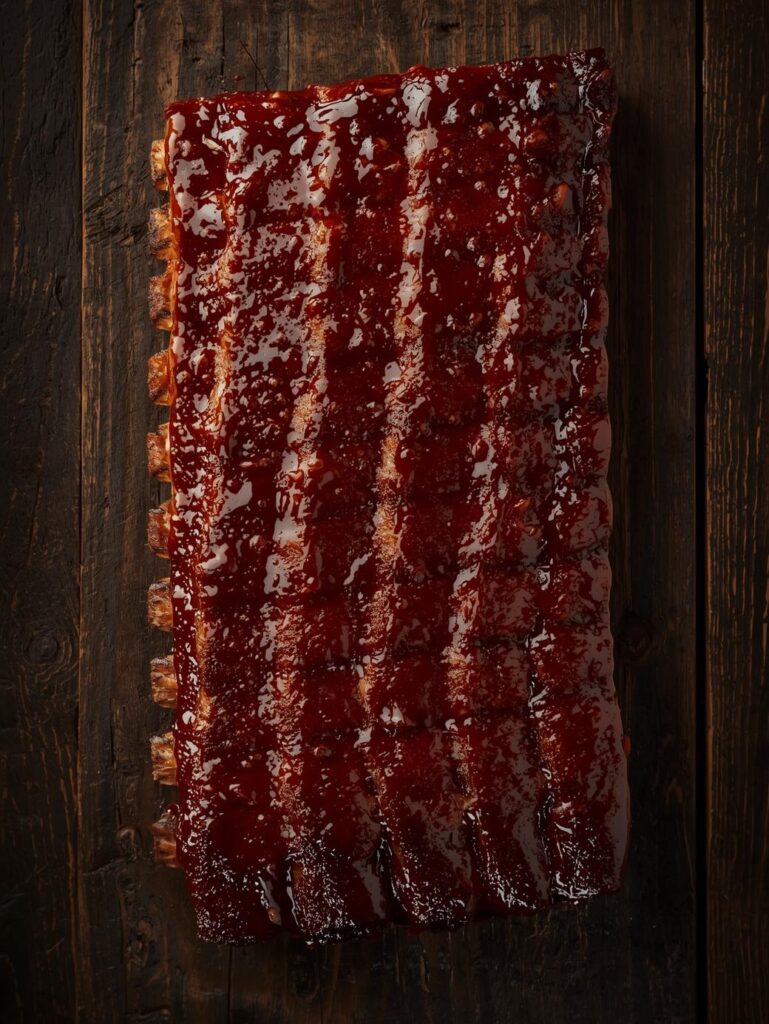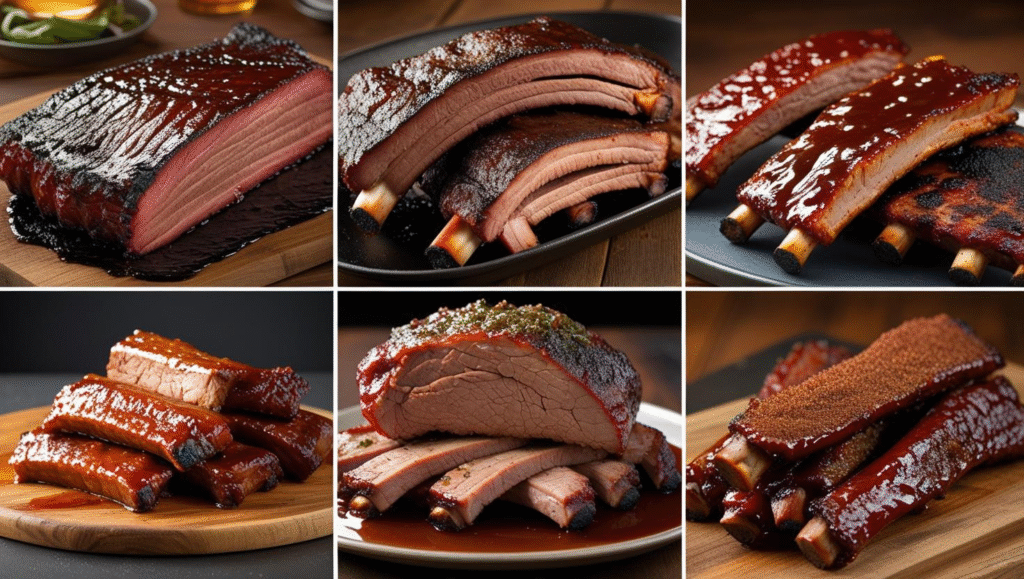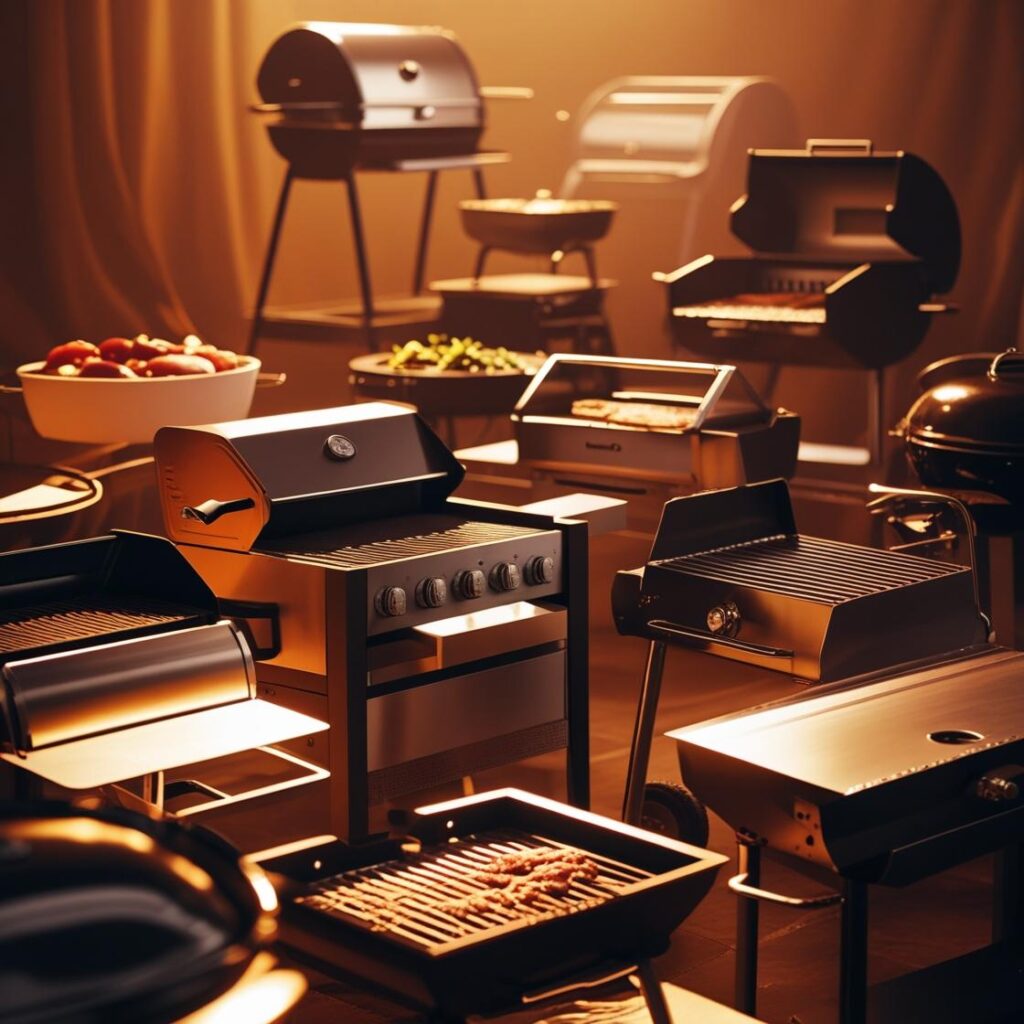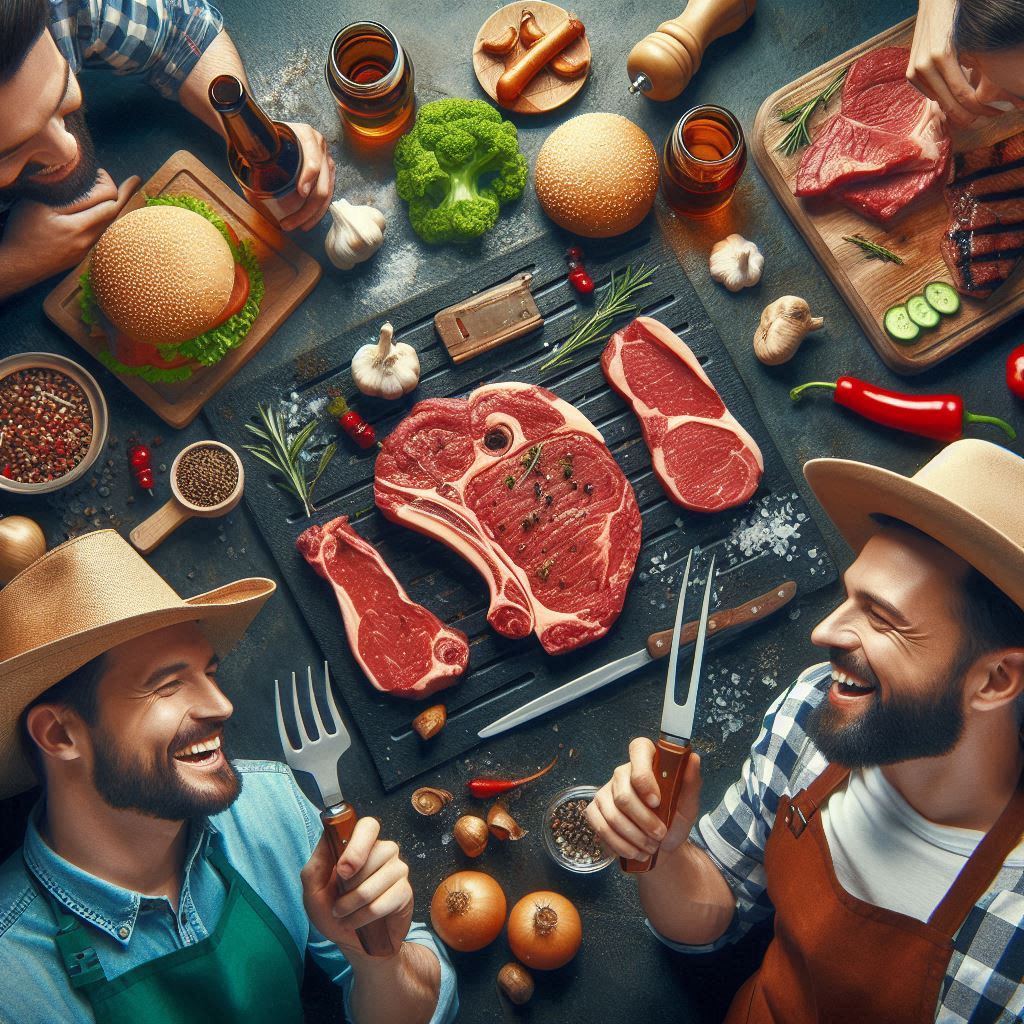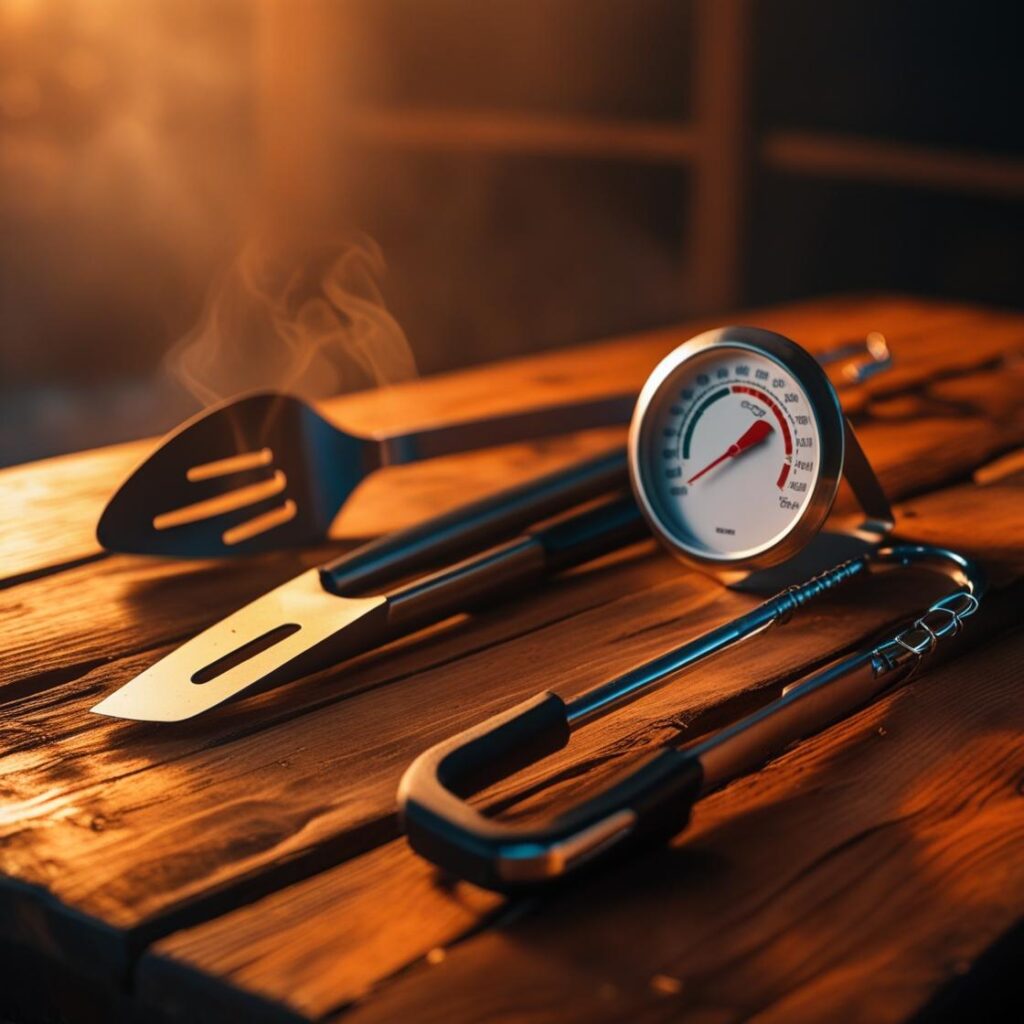11 BBQ Sauce Mistakes That Burn Instead of Caramelize
There are few things more iconic in American grilling than the sticky, sweet, and smoky glaze of a perfectly sauced piece of BBQ. It’s the final, delicious layer that promises to be the crowning glory of your cookout. But far too often, that beautiful promise turns into a bitter, acrid reality. The sauce burns, turning a tender piece of meat into a tough, black mess. This frustrating outcome is almost always the result of a few common BBQ sauce mistakes.
This guide will show you how to caramelize BBQ sauce to perfection. We’ve compiled a list of 11 BBQ sauce mistakes that can ruin your cookout and provided the professional fixes you need. From the timing of application to the type of sauce you use, these BBQ sauce tips will ensure your glaze is always sweet, never bitter.
The Science of Caramelization vs. Burning
At its core, most BBQ sauce is a blend of acid (vinegar), savory flavors, and—most importantly—sugar. Sugar is the key to that beautiful caramelized glaze, but it’s also the key to a burnt, bitter crust. When sugar is heated to between 320°F and 350°F, it melts and begins to brown, creating a complex, sweet flavor. This is caramelization. But if the temperature goes much higher, the sugar burns, creating a bitter, unpleasant taste. This is the delicate balance you need to master to avoid burnt BBQ sauce.
11 BBQ Sauce Mistakes That Burn Instead of Caramelize (and How to Fix Them)
1. Applying Sauce Too Early
This is the number one blunder that leads to burnt BBQ sauce.
- Why it happens: The sugars in BBQ sauce burn quickly over high heat. If you apply the sauce at the beginning of a cook, especially over direct flame, the sugars will immediately carbonize, creating a bitter, blackened crust long before the meat is cooked through.
- Professional Fix: Apply the sauce only in the last 15-20 minutes of the cook. This gives the sauce just enough time to thicken and caramelize without burning.
2. Using a Low-Quality Sauce
Not all sauces are created equal, and some are more prone to burning than others.
- Why it happens: Many mass-market BBQ sauces are loaded with high-fructose corn syrup, which has a very low burning point. They also lack a balance of vinegar and other ingredients to prevent them from scorching.
- Professional Fix: Choose a high-quality sauce that uses natural sugar, molasses, or honey. If you’re buying a store-bought sauce, look for one that has a balanced flavor profile and isn’t overly sweet.
3. Putting Sauce on a Cold Grill
This is a mistake that causes the sauce to stick and burn to the grates, not the meat.
- Why it happens: When you apply sauce to meat that is placed on cold grates, the sauce will drip and stick to the grates. As the grill heats up, the sauce will burn, creating a thick, black residue that will ruin the taste of your next piece of meat.
- Professional Fix: Make sure your grill is properly preheated and the grates are screaming hot before you put any meat on. This is a crucial step we cover in our guide on 10 grilling errors that ruin perfect steak.
4. Not Patting the Meat Dry First
Sauce won’t adhere properly to a wet surface.
- Why it happens: Just like with seasoning, moisture on the surface of the meat will prevent the sauce from sticking and creating a good glaze. The sauce will drip off and burn on the grates, rather than caramelizing on the meat.
- Professional Fix: Always pat your meat completely dry with a paper towel before you apply any sauce. This creates a clean, dry surface for the sauce to stick to.
5. Not Brushing the Sauce on Evenly
An uneven coat of sauce will lead to a patchy, burnt glaze.
- Why it happens: When you apply the sauce unevenly, some parts of the meat will have a thick layer of sauce that burns, while other parts will have no sauce at all. This ruins both the flavor and the presentation.
- Professional Fix: Use a high-quality basting brush to apply a thin, even coat of sauce to all sides of the meat. A good baster will help you achieve a smooth, consistent finish that will caramelize perfectly.
6. Using Sauce on the Wrong Cut of Meat
Not all cuts of meat are made for BBQ sauce.
- Why it happens: Very thin cuts of meat like skirt steak or chicken tenders will cook too quickly for a sauce to caramelize properly. You’ll end up with a burnt crust and raw meat, or you’ll overcook the meat trying to get a good glaze.
- Professional Fix: Use sauce on cuts that can handle a longer cook time and a lower temperature, like ribs, pulled pork, or brisket. For thin cuts, consider making a pan sauce after the meat is cooked.
7. Using Sauce on a Cold Piece of Meat
This is a classic rookie mistake that can lead to an uneven cook and a ruined glaze.
- Why it happens: When you apply sauce to a cold piece of meat, the sauce will get cold and thick, preventing it from penetrating the meat. It will also cause the cold sauce to stick and burn to the grates.
- Professional Fix: Make sure your meat is at room temperature before you apply the sauce. This allows the sauce to go on smoothly and evenly, preventing it from clumping and burning.
8. Using the Same Brush for Raw and Cooked Meat
This is a major food safety issue and one of the most serious BBQ sauce mistakes.
- Why it happens: Using the same brush for raw meat and then for cooked meat can transfer harmful bacteria from the raw meat to the cooked meat. This is a major risk for food poisoning.
- Professional Fix: Use two separate basting brushes: one for the raw meat and one for the cooked meat. Or, you can use the same brush but be sure to wash it thoroughly with soap and hot water after each use.
9. Over-Saucing
A thick, caked-on layer of sauce is a recipe for a bitter, burnt mess.
- Why it happens: Too much sauce prevents the heat from penetrating the meat and cooking it evenly. It also creates a thick, sugary crust that will burn before the inside of the meat is cooked.
- Professional Fix: Apply a thin, light layer of sauce. You can always add a second coat if you want more flavor, but it’s always better to start with less and add more later.
10. Not Allowing the Sauce to Caramelize
Some people rush the saucing process, leading to a runny, uncooked glaze.
- Why it happens: Sauce needs time to thicken and caramelize. If you apply it too late or don’t allow it enough time on the grill, you will get a thin, watery glaze that doesn’t have that classic sweet and smoky flavor.
- Professional Fix: Give the sauce at least 15 minutes to cook and caramelize. For the best result, keep the meat on indirect heat and let the sauce cook slowly.
11. Not Accounting for Carryover Cooking
The sauce will continue to cook after you remove the meat from the grill.
- Why it happens: When you remove the meat from the grill, the residual heat will continue to cook the meat and the sauce. If you wait too long to pull the meat, the sauce will burn while it’s resting. This is a common grilling error that can ruin a perfect cook.
- Professional Fix: Pull the meat from the grill a few degrees early, and then let it rest. The sauce will continue to cook and caramelize while the meat is resting, giving you a perfect glaze without the risk of burning. This is a concept we cover in our guide on 7 temperature mistakes for BBQ that destroy juiciness. For more on this, check out our guide on 9 seasoning blunders that overpower natural meat taste.
| BBQ Sauce Mistake | Why It Happens | Professional Fix |
| 1. Sauce Too Early | Sugar burns over high heat. | Apply sauce in the last 15-20 min. |
| 2. Wrong Sauce | High-fructose corn syrup burns easily. | Use a high-quality sauce with natural sugar. |
| 3. Cold Grill | Sauce sticks and burns to the grates. | Preheat the grill until it’s screaming hot. |
| 4. Wet Meat | Sauce won’t adhere properly. | Pat the meat dry before applying sauce. |
| 5. Uneven Application | Leads to burnt patches. | Use a good brush to apply an even coat. |
| 6. Wrong Cut | Thin cuts cook too fast for sauce. | Use sauce on thick cuts like ribs or brisket. |
| 7. Cold Meat | Sauce thickens and won’t penetrate. | Bring meat to room temp before saucing. |
| 8. Same Brush | Major food safety risk. | Use a separate brush for cooked meat. |
| 9. Over-Saucing | Sauce creates a burnt, thick crust. | Use a light, thin layer of sauce. |
| 10. Not Caramelizing | Sauce is watery and runny. | Give the sauce at least 15 min to cook. |
| 11. No Carryover | Sauce burns while resting. | Pull the meat from the grill a few degrees early. |
Conclusion
Mastering the art of using BBQ sauce is a matter of timing and precision. By understanding and avoiding these 11 BBQ sauce mistakes, you can transform a good piece of meat into a truly great one. Remember, the goal is always a sweet and smoky glaze, not a burnt, bitter mess. So, the next time you fire up the grill, follow these BBQ sauce tips, and get ready for the best glaze of your life.
FAQ: 11 BBQ Sauce Mistakes That Burn Instead of Caramelize
1. What’s the best temperature to apply BBQ sauce?
You should apply BBQ sauce when the internal temperature of the meat is about 15-20 degrees below its final target temperature. This ensures the sauce has time to caramelize without burning.
2. Can I make my own BBQ sauce?
Yes, making your own BBQ sauce is a great way to control the ingredients and the level of sugar. You can also customize the flavor to your liking.
3. What’s the best way to get a good glaze on ribs?
For ribs, apply the sauce in the last 30 minutes of the cook. This gives the sauce enough time to get sticky and delicious without burning.
4. Should I use a thick or thin BBQ sauce?
A thinner sauce is often better for a glaze, as it allows for a more even coat. A thicker sauce can be great for a finishing sauce on the side.
5. What’s the biggest takeaway from this guide?
The biggest takeaway is that timing is everything. Apply the sauce at the right time, and you will get a perfect caramelized glaze every time.
6. Can I use a sauce with a lot of sugar?
Yes, but you have to be extra careful. A sauce with a lot of sugar is more likely to burn, so you need to cook it over low heat and only apply it in the last few minutes of the cook.
7. How do I fix a sauce that’s too thick?
You can thin out a thick sauce with a little bit of vinegar, water, or beer. This will help it spread more evenly and prevent it from clumping and burning on the grill.

